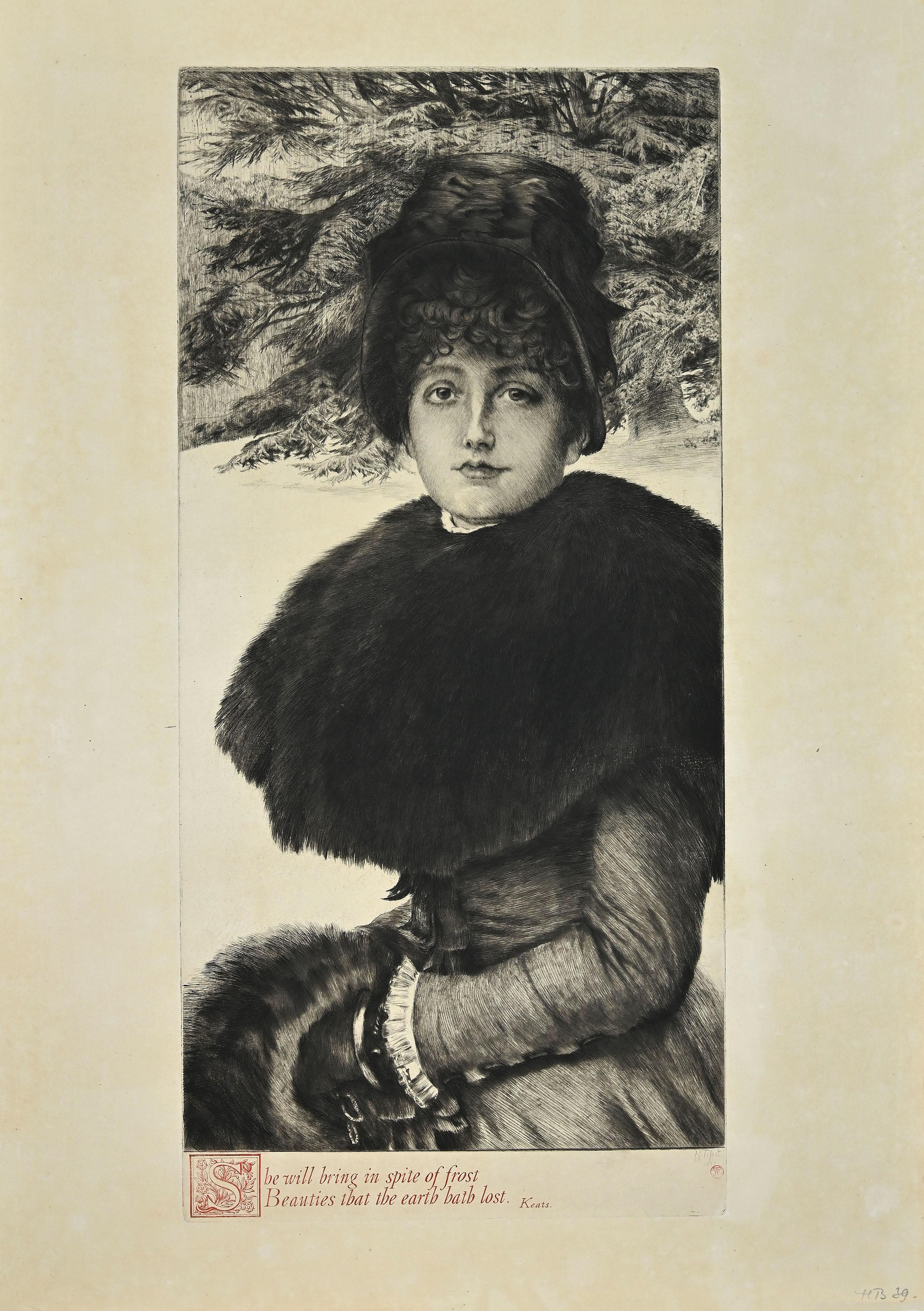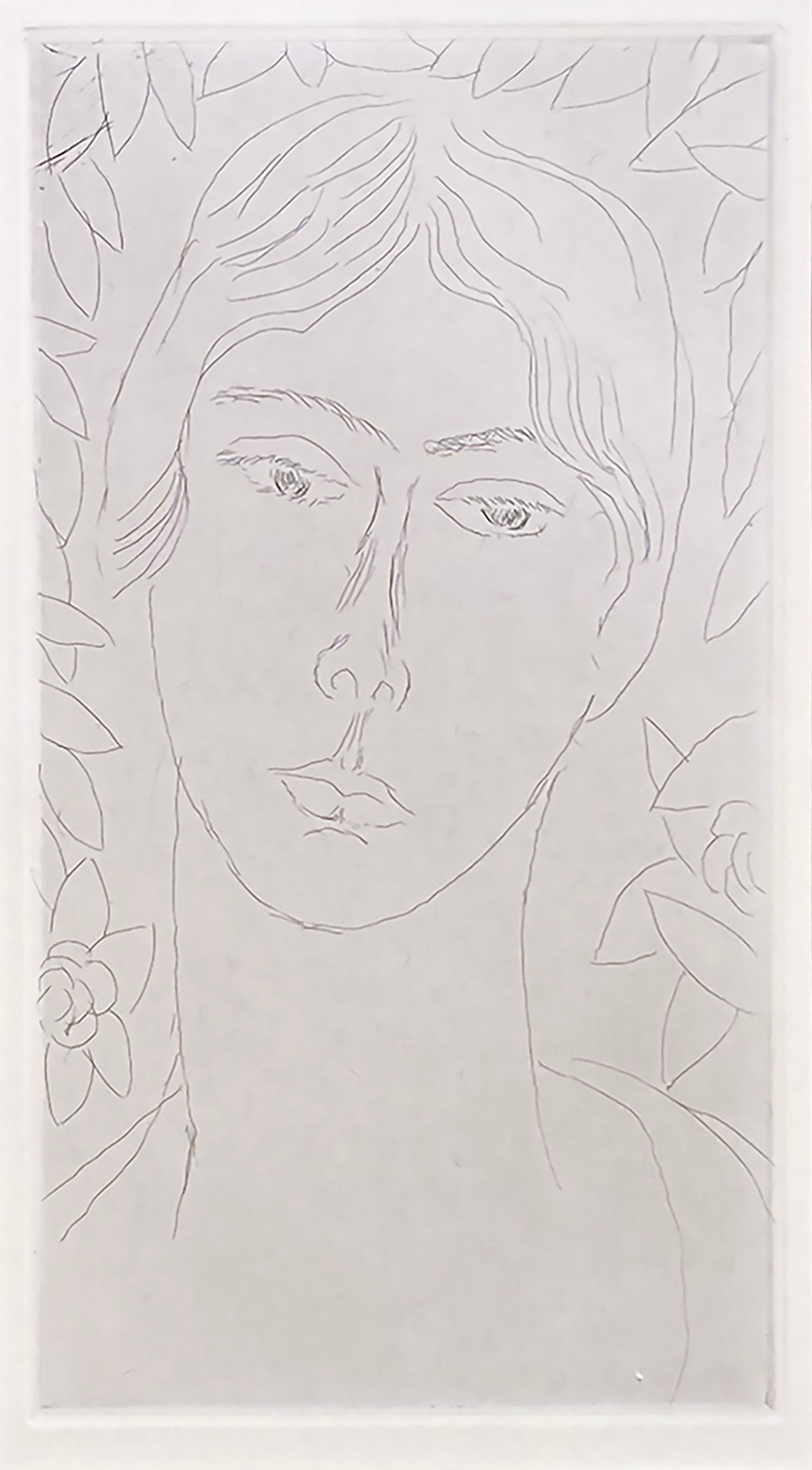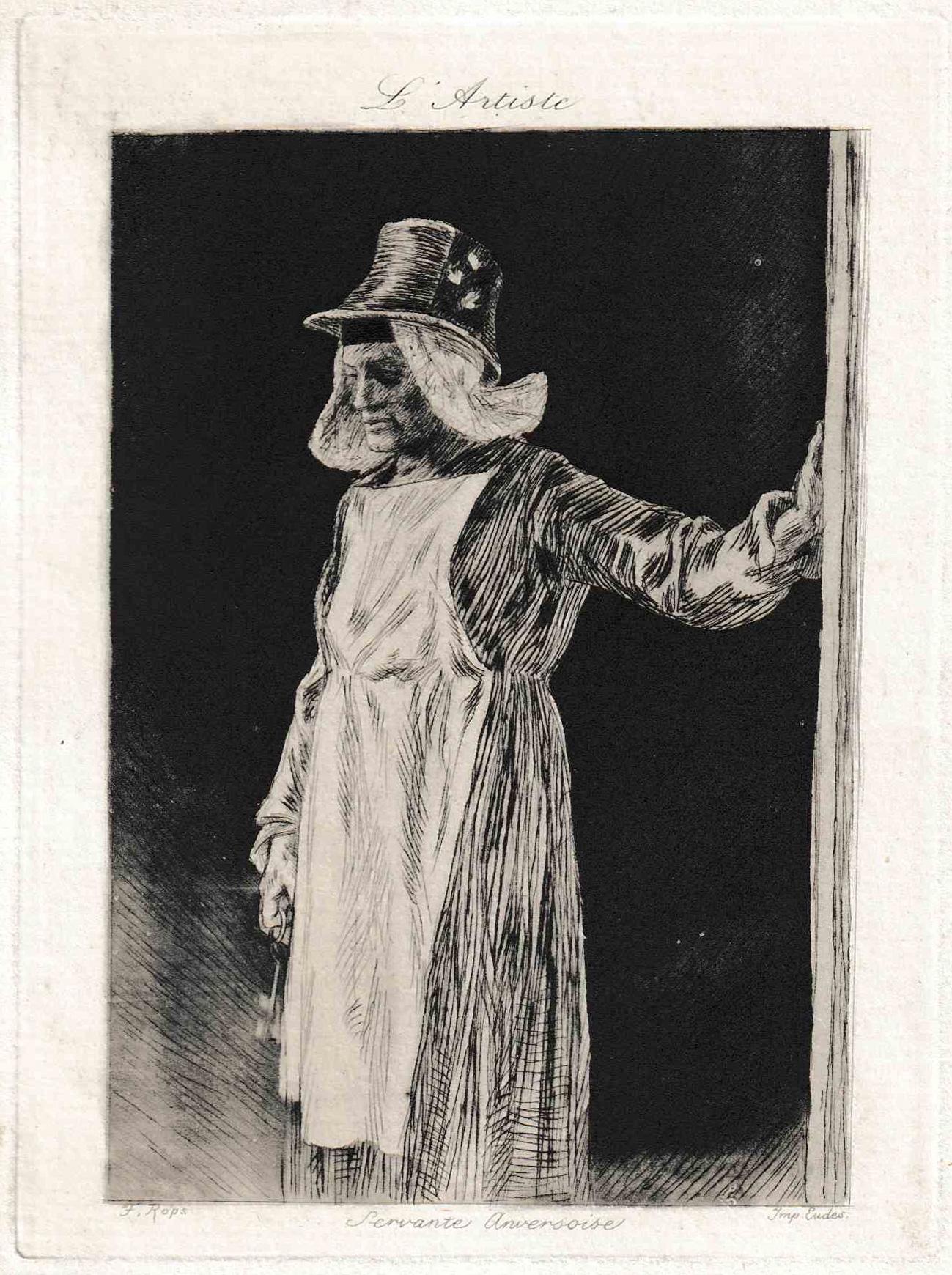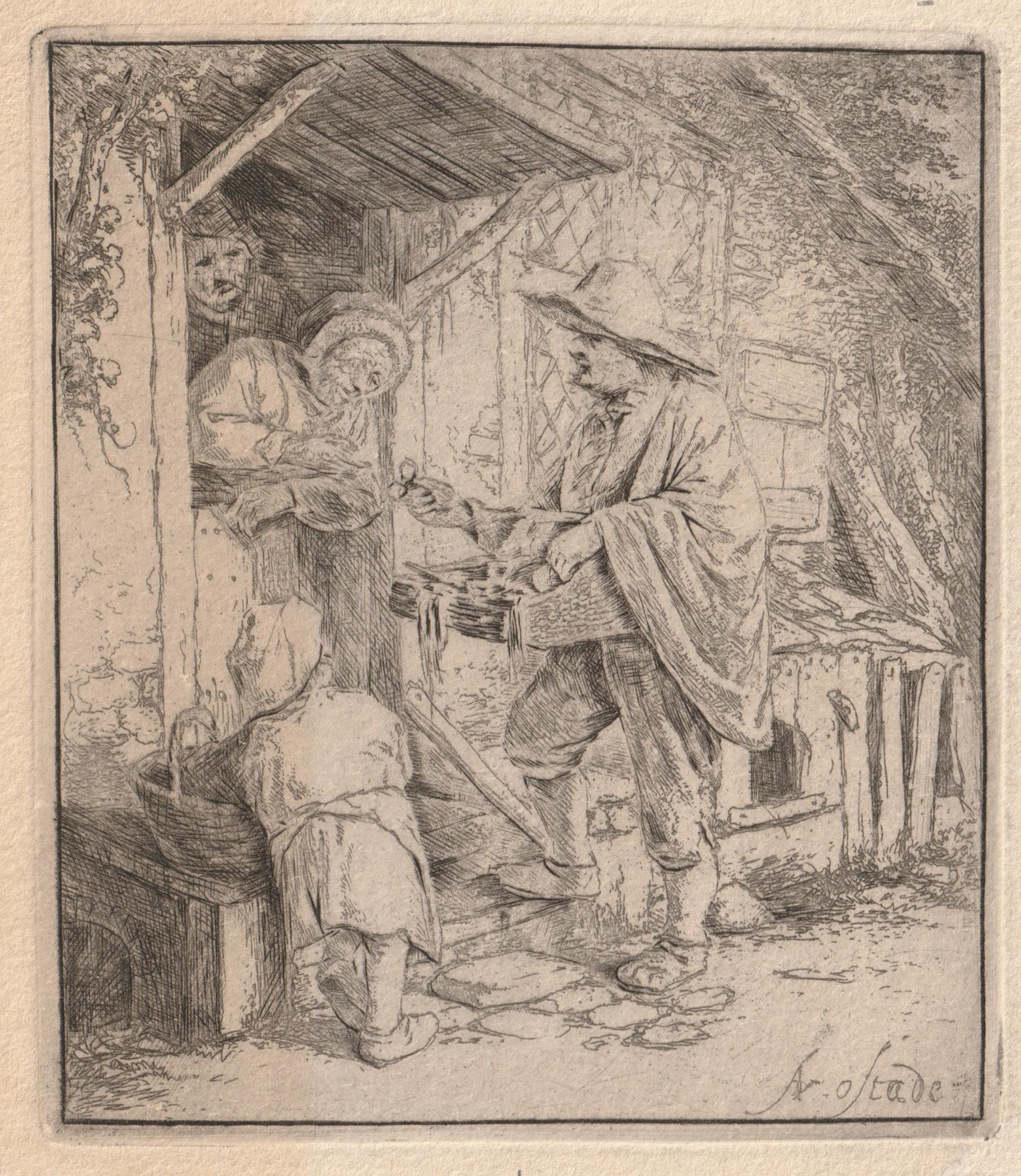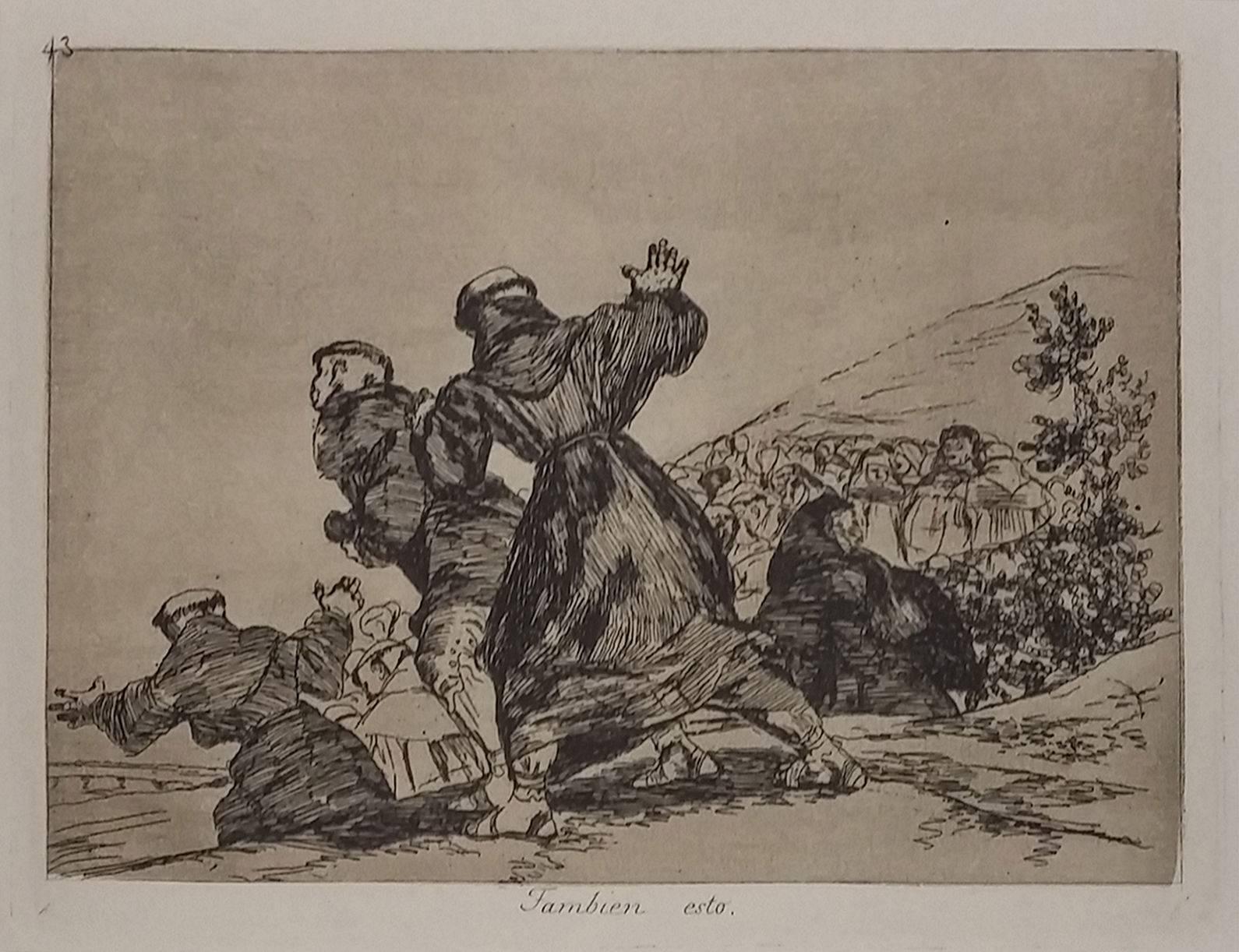Edgar ChahineLa Marchande des Quatres-Saisons1900
1900
About the Item
- Creator:Edgar Chahine (1874 - 1947, French)
- Creation Year:1900
- Dimensions:Height: 11.75 in (29.85 cm)Width: 13.75 in (34.93 cm)
- Medium:
- Movement & Style:
- Period:
- Condition:
- Gallery Location:Middletown, NY
- Reference Number:
Edgar Chahine
Edgar Chahine was born in Vienna, Austria to Armenian parents. At age 21, he decided to travel to Paris and pursue a career in fine arts. He studied painting under formal instruction at the Académie Julian, but his natural ability and his determination to express himself as an artist led him to a personal style based more on the reality of the streets of Paris than the confines of the classroom. Chahine began to experiment with the possibilities of printmaking at the age of 25. Although he had already achieved some success with his paintings, he became fascinated with prints and soon worked exclusively in this medium. His prints were very much in demand by collectors and the well known publisher Edmond Sagot quickly became his dealer. He won several medals and awards and received many commissions. Chahine's print œuvre is an equal representation of elegant Parisian men and women, Bourgeois society and more common scenes of country fairs and street life. His sympathetic depictions of children, beggars, circus performers and other often forgotten people were engaging and touched the emotions of the observer, while his portrayals of the more fashionable side of Paris accurately captured its "joie de vivre". The death of his fiancé plunged him into a deep depression, and he left Paris to travel through Italy. This voyage gave him the serenity and the inspiration to begin working with new enthusiasm, etching the day's drawings onto copper plates in his hotel room each night. He returned with new vigor and expanded his efforts to once again include pastels and oils in his work. This productivity was not to last, as the combination of terrible events in Armenia and Syria and the outbreak of World War I rendered Chahine unable to work. Not until his marriage in 1921 did he begin to make art again. In 1925, he became a French citizen and began a new burst of creative activity in fine prints and illustrated books. Many of Chahine's prints were lost in a fire in his atelier in 1926, and many more were destroyed in a flood in 1942.
- ShippingRetrieving quote...Ships From: Middletown, NY
- Return PolicyA return for this item may be initiated within 30 days of delivery.
- Vieille Masken, La Servante AnversoiseBy Félicien RopsLocated in Middletown, NYEtching with engraving and drypoint printed in brownish black ink on cream laid paper with a partial heraldic A and fleur-de-lis watermark, 5 5/8 x 4 1/4 inches ( 341 x 107 mm), full...Category
Late 19th Century French School Portrait Prints
MaterialsLaid Paper, Engraving, Drypoint, Etching
- René de Laudonnière Sablais (de Burdigale). After Crispjin van de Passe IBy Charles MeryonLocated in Middletown, NYParis: 1861 Etching, drypoint, and engraving on cream laid paper, 6 x 4 1/4 inches (152 x 108 mm), full margins. Dog-eared left corner, extending 3-inches into the sheet, but well ou...Category
Mid-19th Century French School Portrait Prints
MaterialsLaid Paper, Etching, Drypoint, Engraving
- The Spectacle SellerBy Adriaen Jansz van OstadeLocated in Middletown, NYEtching and drypoint on cream laid paper, 4 x 3 3/8 inches (102 x 86 mm), 1/4 inch margins. Signed in the plate, lower left corner. The 3rd state (of 6), after the rounding of the pl...Category
Mid-17th Century Old Masters Figurative Prints
MaterialsDrypoint, Laid Paper, Etching
- 'The Protestants Champion!!' (... Duke of Sussex, Son of King George III)By George CruikshankLocated in Middletown, NYThis portrait of King George the III's son was published in the same year that Beethoven's Ninth Symphony premiered in London. 'The Protestants Champion!!' (Prince Augustus Frederick, Duke of Sussex...Category
Early 19th Century English School Portrait Prints
MaterialsWatercolor, Handmade Paper, Engraving, Etching
- Jeune Femme Cousant; Madame Helleu (Young Woman Sewing, artist's wife)By Paul César HelleuLocated in Middletown, NYParis: Gazette des Beaux Arts, 1892. Etching and dry point on cream laid paper. 7 9/16 x 5 7/8 inches (191 x 148 mm), full margins. Signed in pencil, lower right margin. A dark, ink...Category
Late 19th Century Realist Portrait Prints
MaterialsDrypoint, Etching
- My DaughterLocated in Middletown, NYDrypoint etching on buff wove paper, 9 3/4 x 12 3/4 inches (250 x 322 mm), full margins. Signed in pencil, lower right margin. Some general age tone, and minor mat tone around the pe...Category
Early 20th Century Modern Portrait Prints
MaterialsEtching, Drypoint
- Promenade dans la Neige - Etching by J. Tissot - 1880By James TissotLocated in Roma, ITBeautiful print on verge crème, 2° state on 3, with letters printed in red. Stamp “Lugt 1545”. Little crack and fold on lower left margin of the sheet. Some small traces of oxidati...Category
1880s Post-Impressionist Portrait Prints
MaterialsDrypoint, Etching
- "Mlle Landsberg" (grade planche, pl. 16)By Henri MatisseLocated in Missouri, MO"Mlle Landsberg" (grade planche, pl. 16), 1914 Henri Matisse (French, 1869-1954) Signed and Numbered Lower Right Edition 12/15 Image size: 7 7/8 x 4 5/16 inches Sheet size: 17 11/16 x 12 1/2 inches With frame: 19 1/2 x 14 1/2 inches Henri Matisse came from a family who were of Flemish origin and lived near the Belgian border. At eight o'clock on the evening of December 31, 1869, he was born in his grandparents' home in the town of Le Cateau in the cheerless far north of France. His father was a self-made seed merchant who was a mixture of determination and tightly coiled tension. Henri had no clear idea of what he wanted to do with his life. He was a twenty-year-old law clerk convalescing from appendicitis when he first began to paint, using a box of colors given to him by his mother. Little more than a year later, in 1890, he had abandoned law and was studying art in Paris. The classes consisted of drawing from plaster casts and nude models and of copying paintings in the Louvre. He soon rebelled against the school's conservative atmosphere; he replaced the dark tones of his earliest works with brighter colors that reflected his awareness of Impressionism. Matisse was also a violinist; he took an odd pride in the notion that if his painting eye failed, he could support his family by fiddling on the streets of Paris. Henri found a girlfriend while studying art, and he fathered a daughter, Marguerite, by her in 1894. In 1898 he married another woman, Amelie Parayre. She adopted the beloved Marguerite; they eventually had two sons, Jean, a sculptor and Pierre who became an eminent art dealer. Relations between Matisse and his wife were often strained. He often dallied with other women, and they finally separated in 1939 over a model who had been hired as a companion for Mme. Matisse. She was Madame Lydia, and after Mme. Matisse left, she remained with Matisse until he died. Matisse spent the summer of 1905 working with Andre Derain in the small Mediterranean seaport of Collioure. They began using bright and dissonant colors. When they and their colleagues exhibited together, they caused a sensation. The critics and the public considered their paintings to be so crude and so roughly crafted that the group became known as Les Fauves (the wild beasts). By 1907, Matisse moved on from the concerns of Fauvism and turned his attention to studies of the human figure. He had begun to sculpt a few years earlier. In 1910, when he saw an exhibition of Islamic art, he was fascinated with the multiple patterned areas and adapted the decorative universe of the miniatures to his interiors. As a continuation of his interest in the "exotic", Matisse made extended trips to Morocco in 1912 and 1913. At the end of 1917, Matisse moved to Nice; he would spend part of each year there for the remainder of his life. A meticulous dandy, he wore a light tweed jacket amd a tie when he painted. He never used a palette, but instead squeezed his colors on to plain white kitchen dishes...Category
1910s Fauvist Figurative Prints
MaterialsEtching, Drypoint
- TAMBIEN ESTOBy Francisco GoyaLocated in Aventura, FLTambien esto / So is this (Disasters of War, plate 43, Harris 163, Delteil 162). Original etching, burnished aquatint, and burnisher, c. 1808-1814. The clergy are running; their floc...Category
Early 19th Century Romantic Figurative Prints
MaterialsEtching, Paper, Drypoint
- Chris Ofili, Untitled - 2000, Signed Aquatint and Drypoint Etching, British ArtBy Chris OfiliLocated in Hamburg, DEChris Ofili (British, b. 1968) Untitled, 2000 Medium: Etching, aquatint and drypoint, on Hahnemühle wove paper Dimensions: 25.7 × 20.8 cm (10 1/10 × 8 1/5 in) Edition of 100: Hand-si...Category
21st Century and Contemporary Contemporary Portrait Prints
MaterialsDrypoint, Etching, Aquatint
- Salvador Dali - La Fontaine Portrait - Handsigned EngravingBy Salvador DalíLocated in Collonge Bellerive, Geneve, CHSalvador Dali - La Fontaine Portrait - Handsigned Engraving 1974 Hand signed by Dali Edition: /250 The dimensions of the image are 22.8 x 15.7 inches on 31 x 23.2 inch paper Referenc...Category
1970s Surrealist Figurative Prints
MaterialsDrypoint, Aquatint
- The Race - Original Etching by Robert Naly - Mid 20th CenturyBy Robert NalyLocated in Roma, ITThe Race is an Original Etching and Drypoint realized by Robert Naly (1900-1984). Good condition on a yellowed paper . Hand-signed by the artist on the lower right corner.Category
Mid-20th Century Modern Figurative Prints
MaterialsEtching, Drypoint
